On our tour of visiting medieval churches and fortresses in Transylvania, two weeks ago we topped at Alma Vii, a small village in Sibiu county, where there's a hidden jam on the hill.
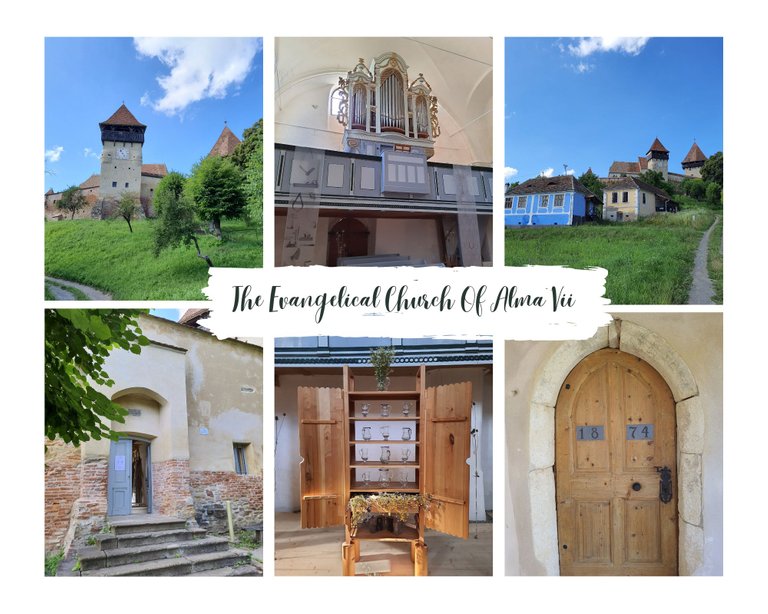
Alma Vii, formerly known as Alma among Vii, Saxon Alma (in German Almen, in Hungarian Szászalmád, Almád, Szászalmás, Német-Almás, Almás) is a village in the commune of Moșna in Sibiu County, Transylvania, Romania.
The first documentary mention dates from 1289 in the act "Herritus de Alma sacerdotes" and from it we learn that the locality depended on the Chapter of Mediaș, so that another document, this time from 1356, mentions it as a free commune of the See of Mediaș. It was in this situation until 1872, when it was included in Târnava Mare county. Between 1951-1968 Alma Vii belonged to the Brașov Region, Mediaș district. Since 1968 it has been part of Sibiu County. source
Alma Vii is a village with 367 inhabitants, according to Wikipedia, but the data is from 2023, which means it's 12 years old. We had a census in 2022, which was mandatory and it's been a year since, but it looks like data is not ready yet. Maybe another year is needed to finalize the census that was mostly done online? Anyway, Alma Vii is a village forgotten by the world, as we call these villages where life is going backwards, development has stopped long time ago and the only people living there are those who don't want to leave at old age. Maybe digital nomading can change life there, but who knows.
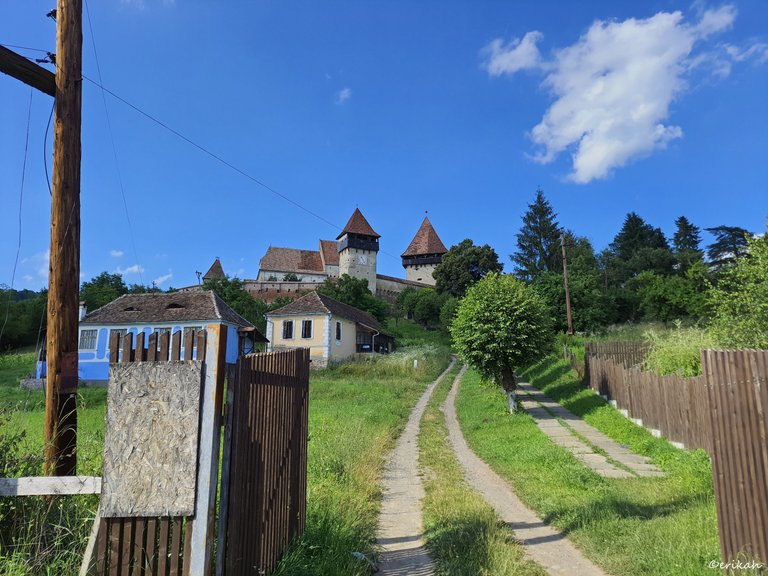
The fortress and the church is on a hill and it is visible from far. I wouldn't call that small hill as we had to walk up where the trees were and there were stairs leading to the entrance. As you can see, the view from down there is fantastic. We had a wonderful weather, the temperature was over 33°C, which it really hot here, but the nice experience can compensate the discomfort caused by the heat.
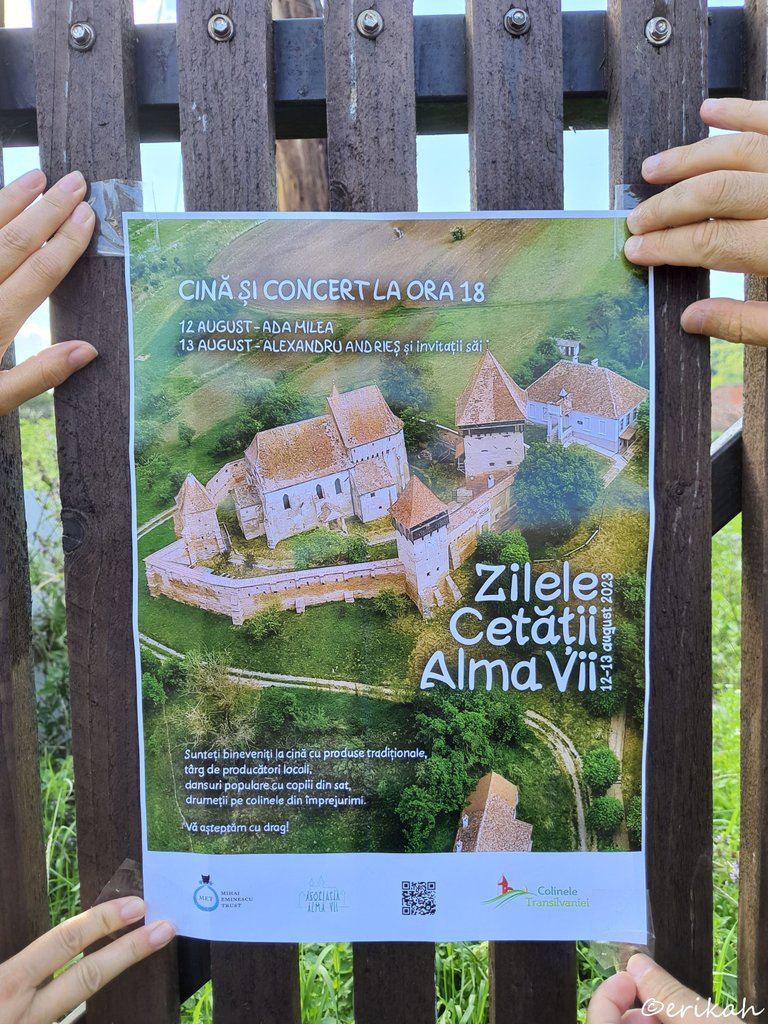
There was a poster on the ground, so we picked it up to see what it was and saw there was an invite for dinner and a concert held in August, a 2 day celebration with the occasion of the village days. Dinner, traditional farmers market with local products, folk dance by children from the village and hiking on the surrounding hills, this is what they are offering to participants. To give you a little bit of context so you can understand, this may mean nothing to someone living in a big city and used to several events each week, but for them, this is the only event, or one of the few organized there. Therefore, I hope people will attend from other cities, villages as well.
Also, you have an aerial view of the fortress and the church, which I could not do as you need a drone for that and I'm not into that.
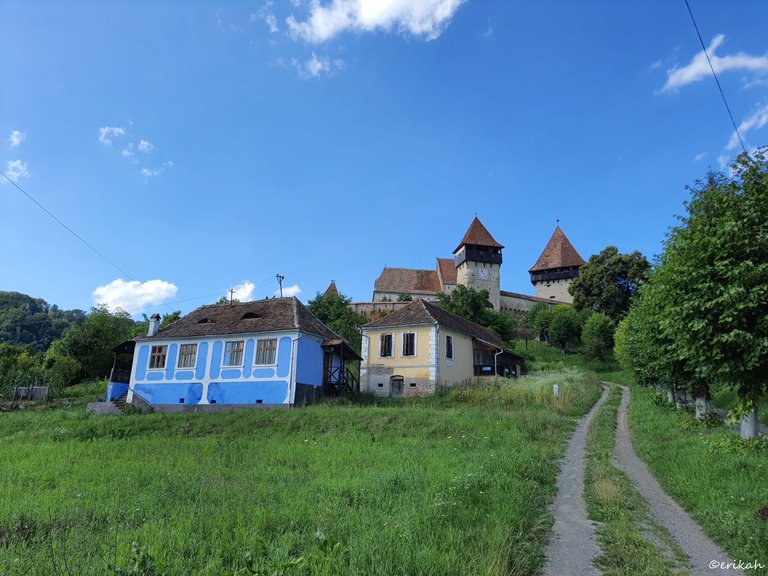
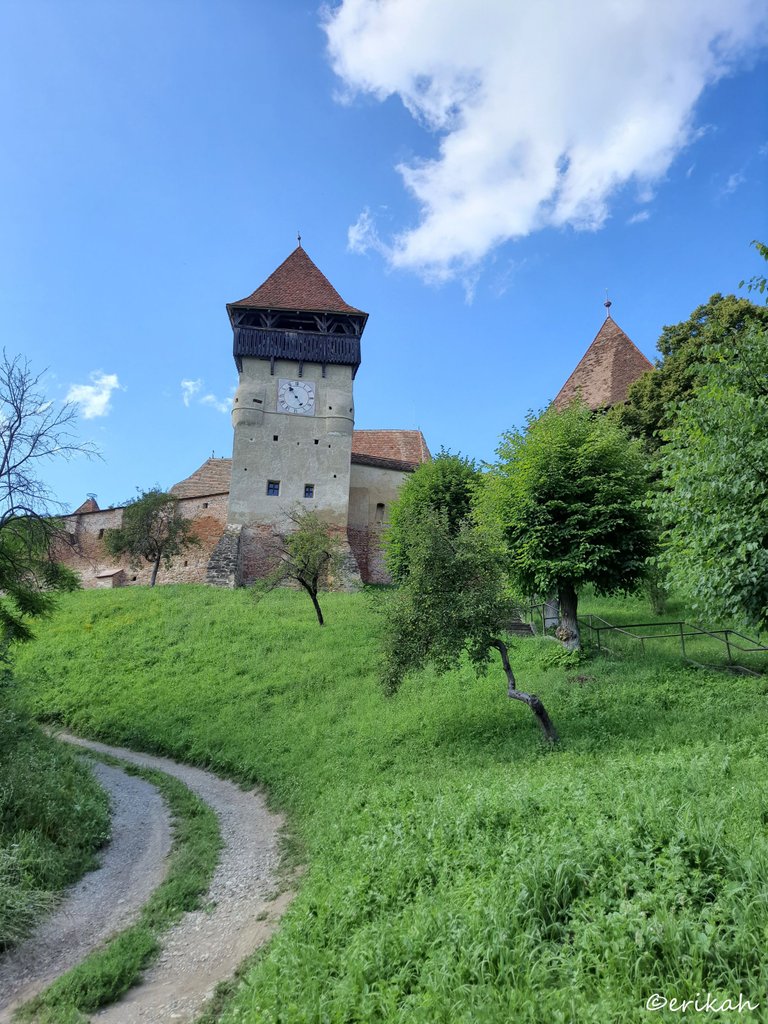
The road is what you see on the photo above. Now this is important as the church service used to be held up in the church and regardless of the weather, people had to climb the hill to get there. There's a school next to the fortress, which means kids had to climb the hill every single day of the week to get to the school, regardless of the weather. You'll also see photos of the school later in this post.
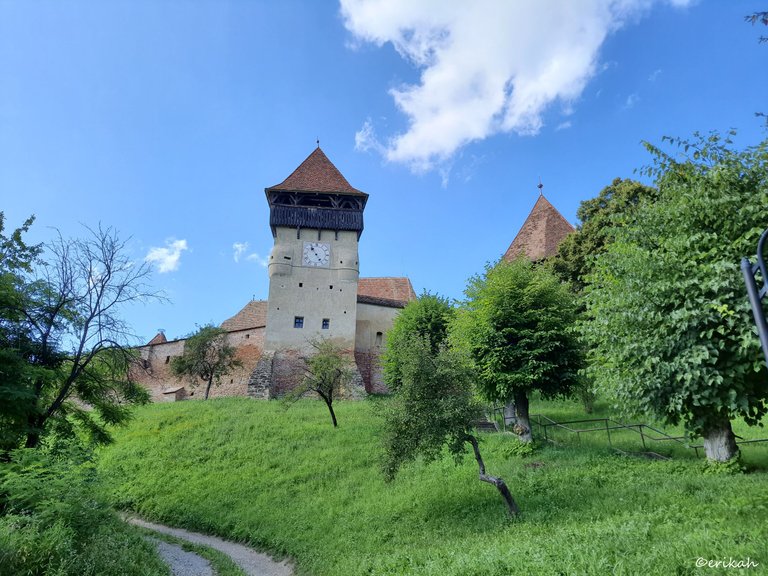
The old clock was still in functioning condition, indicating the time correctly.
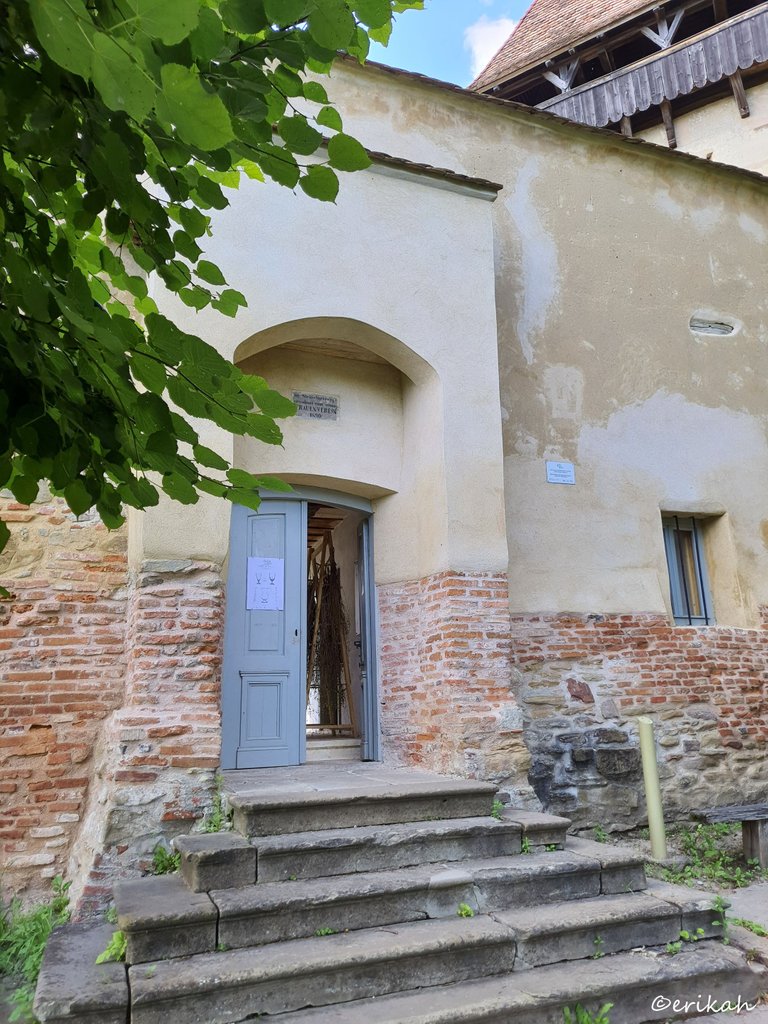
The entrance of the fortress. According to Wikipedia:
The wall has a thickness of 1.5 meters at the base, being built of unhewn stones and river boulders, then thinning in the upper part, where brick was used. source
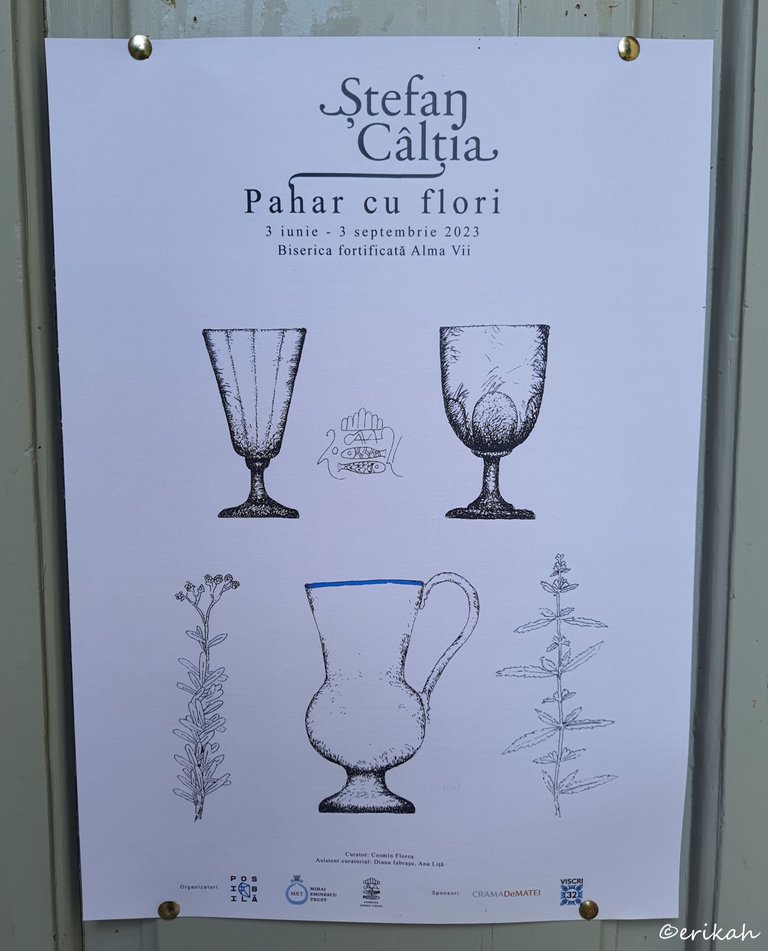
There was a poster on the door, that seemed a bit strange as had a name and a title, saying Glass with flowers and a period of 4 months, so I guessed it was about an exhibition.
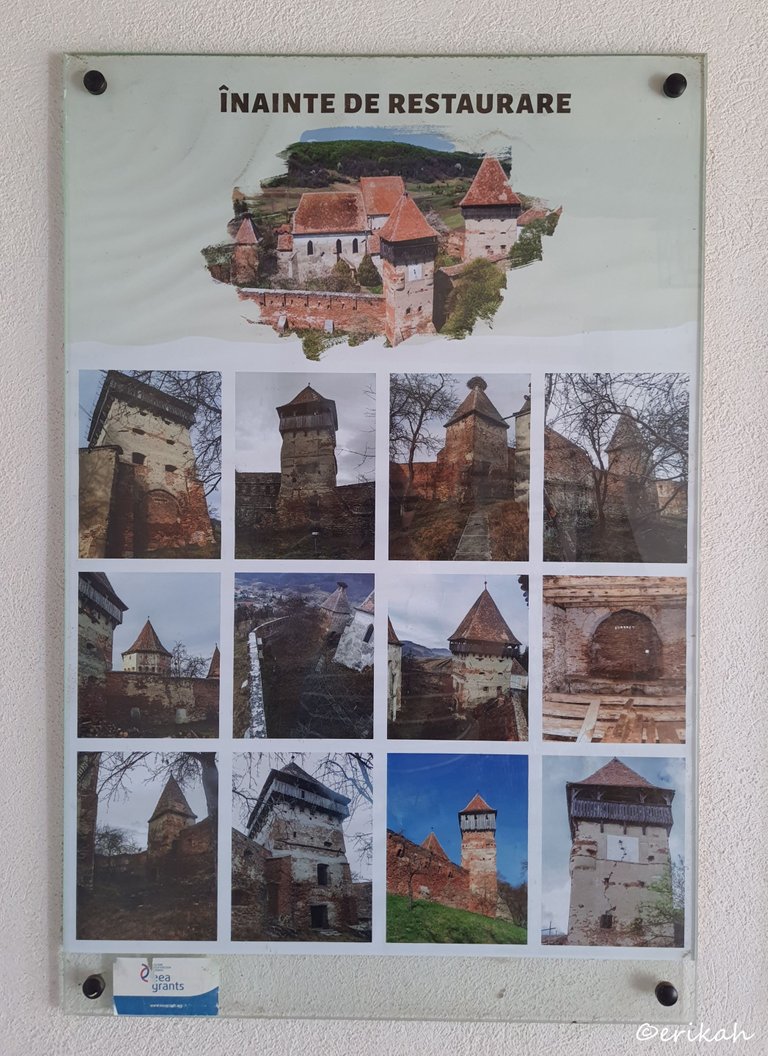
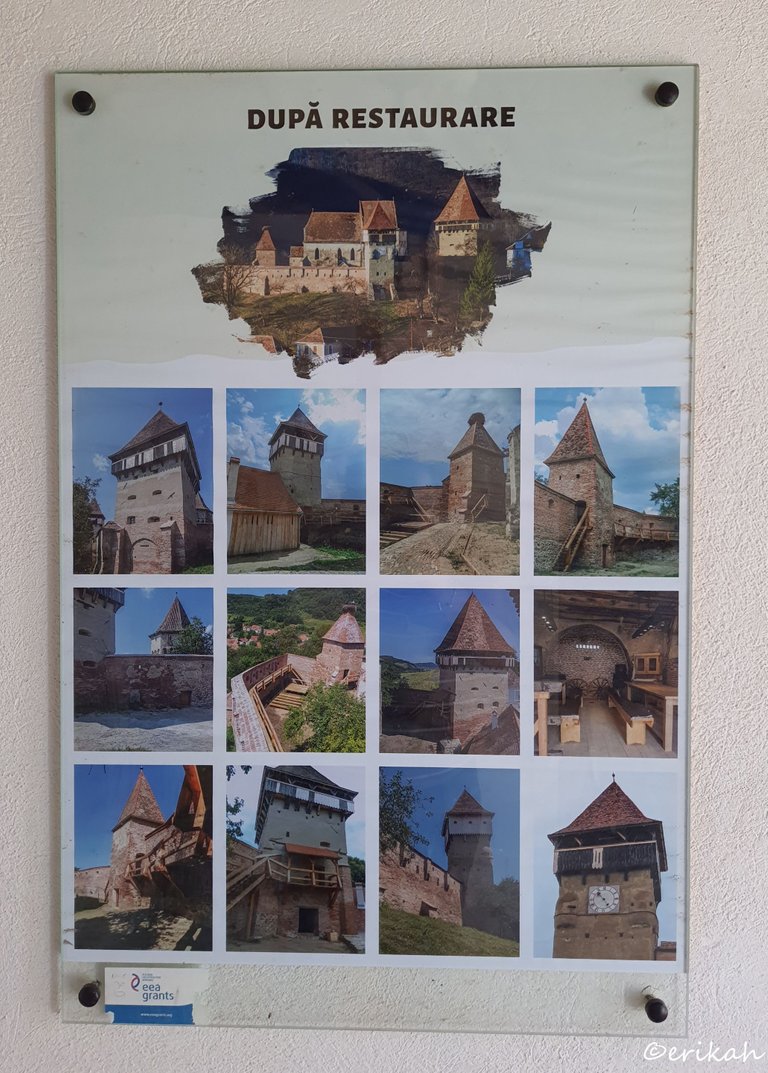
These photos are testimony of how the fortress looked before the restoration works and after.

This is how the entrance looked like from inside. There were those dry flowers hanging on the wooden support, which were strange as well, but you'll see why those were there.
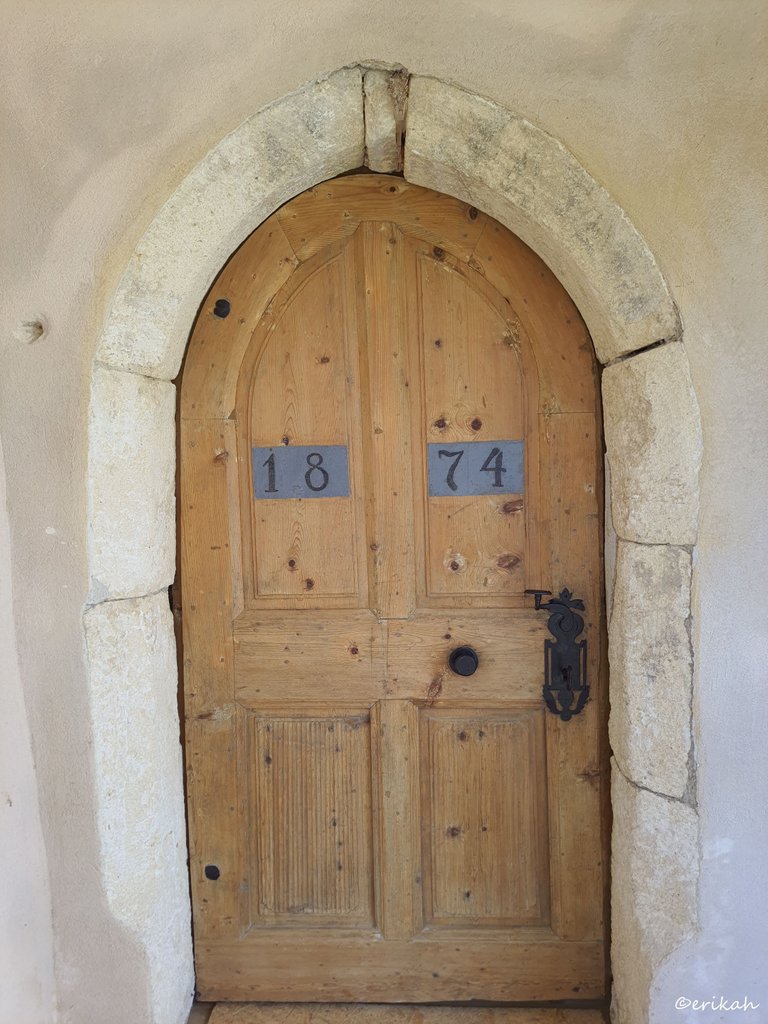
The door of the church, from 1874 they say. You may not be able to tell from the photo, but the door is quite low. I'm not a tall person, just of average height but I had to watch my head.
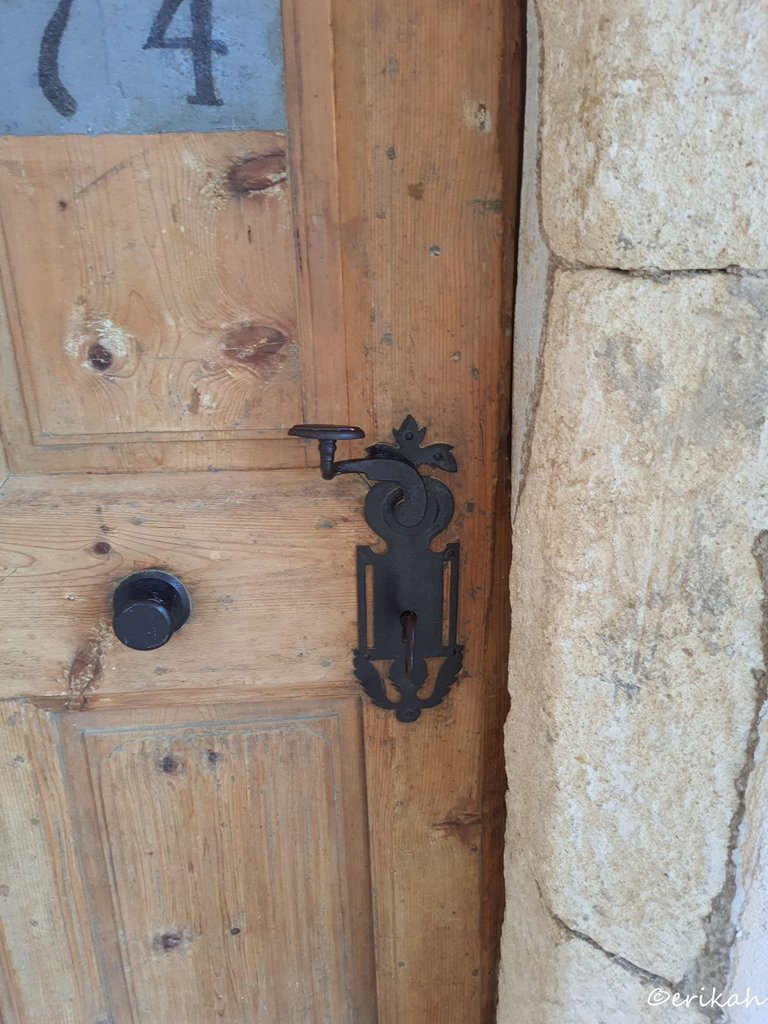
Tagging @mikezillo here for the door and the handle. We had a discussion at one of my earlier posts, here and this is the photo and the other one below I promised.
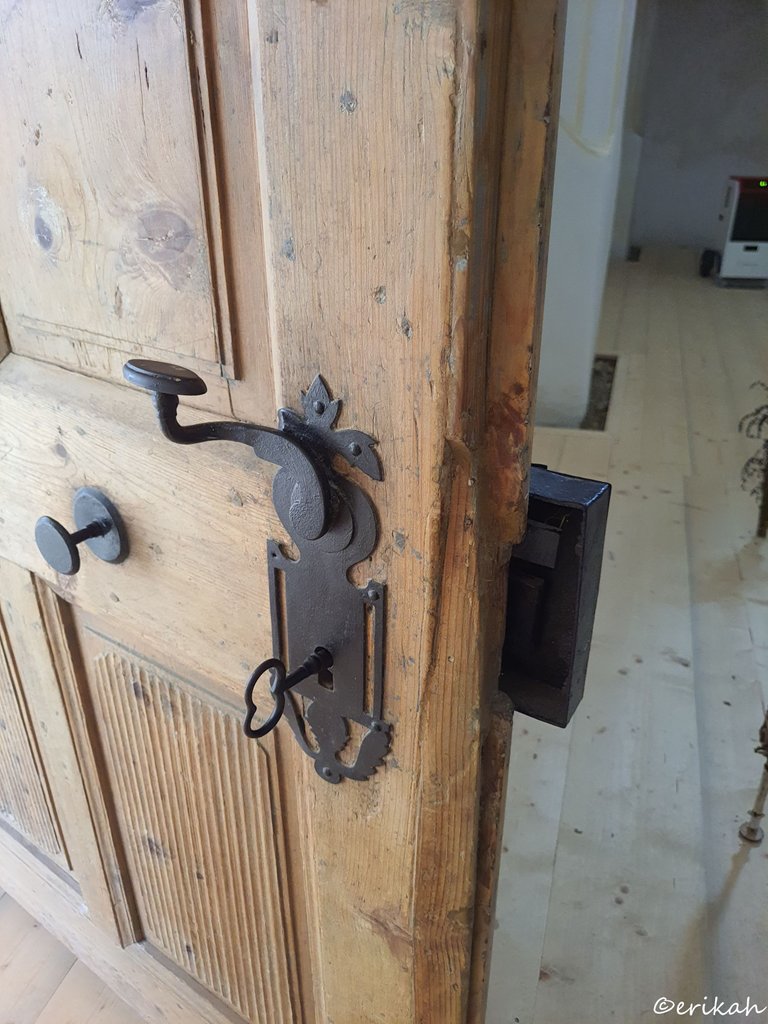
Have you ever seen such a door handle? I keep bumping into them lately and I could not be happier as this is history, these are items from past centuries you don't get anywhere these days. It's not easy to open the door with this handle, you have to hold it and push it down with some effort, but they look great.
I almost forgot an important thing that needs mentioning here. The entry was not free, we had to pay 10 RON, which is around 2€. It was a surprise as churches usually don't have entry fee, but later I realized why you have to pay.
As soon as we entered the fortress's yard, heard organ music coming from the church. For me, the whole thing started to look like Christmas. I'm a huge fan or organ music and consider myself lucky every time I get to hear organ music live.
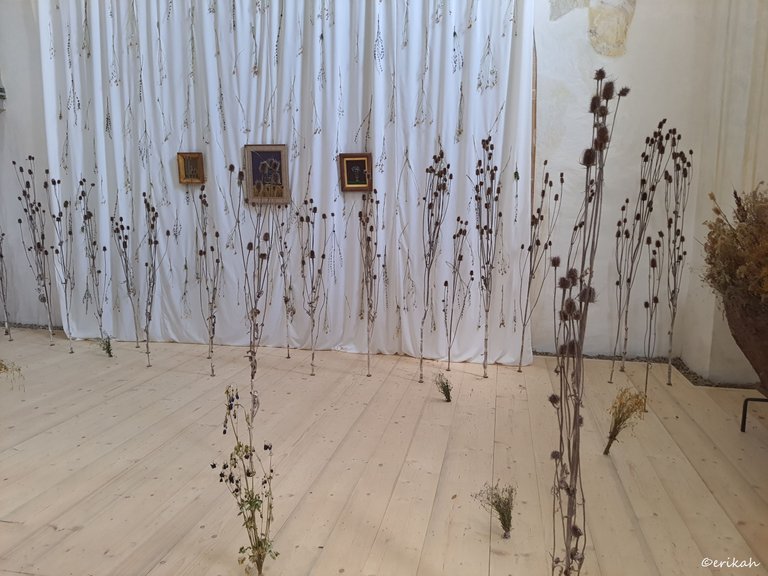
But as soon as we opened the church door, a huge surprise was waiting for us. This was what we saw. If you've ever been to a church, you know this is not how they look like, regardless of the religion they represent. Turned out they had a dry flower and glass exhibition, as the poster showed at the door.
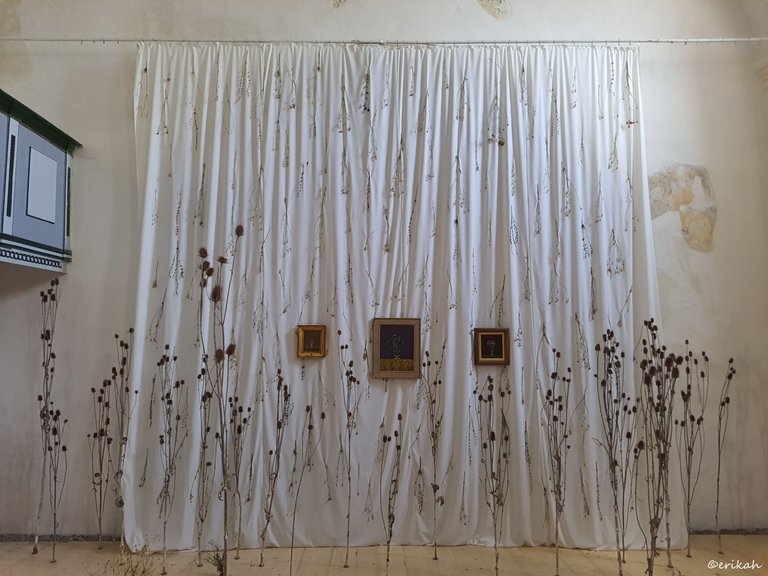
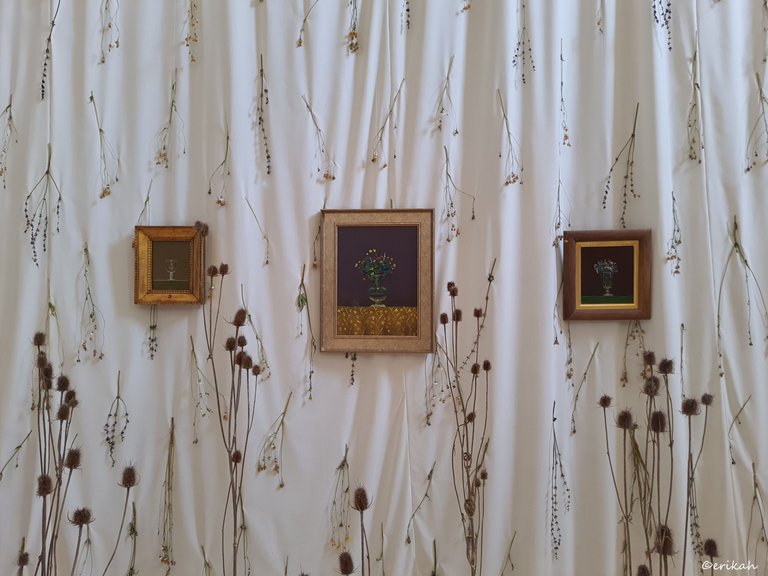
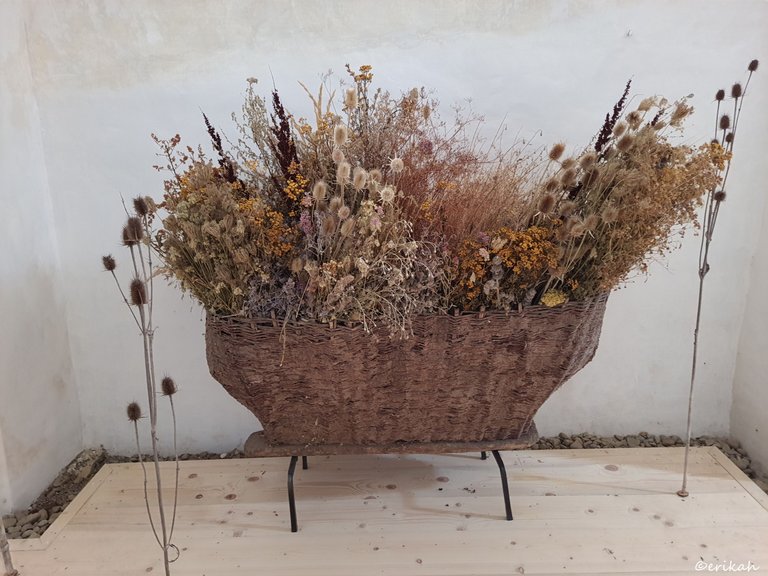
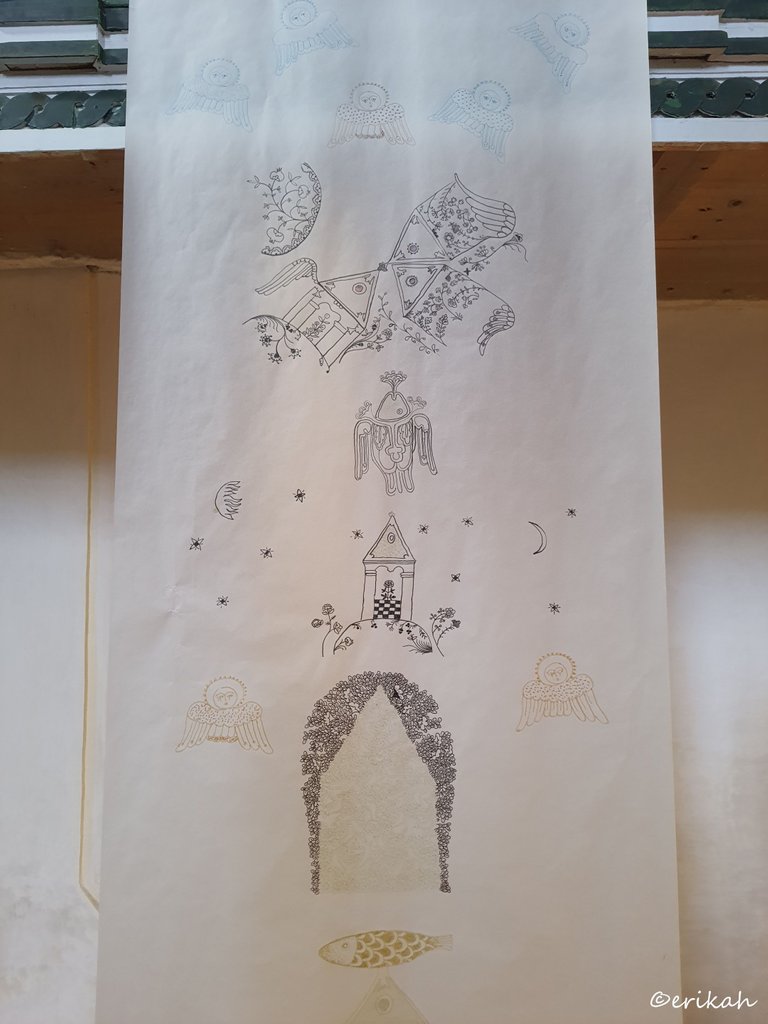
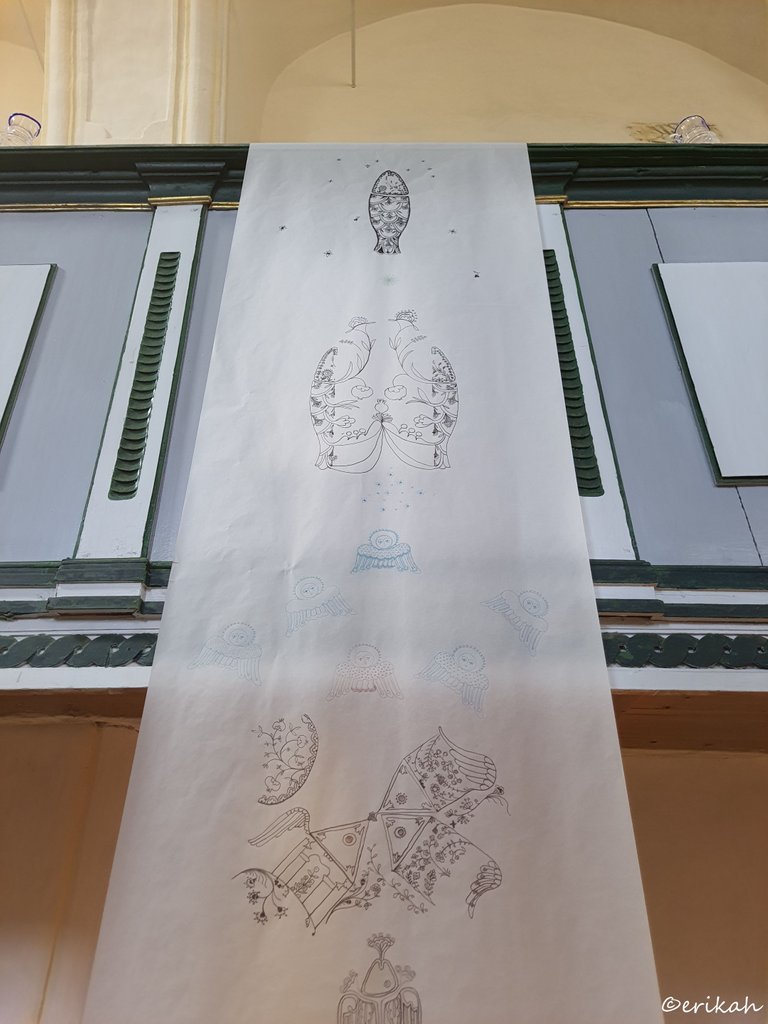
Pencil drawing on long paper sheets hanging from the gallery above.
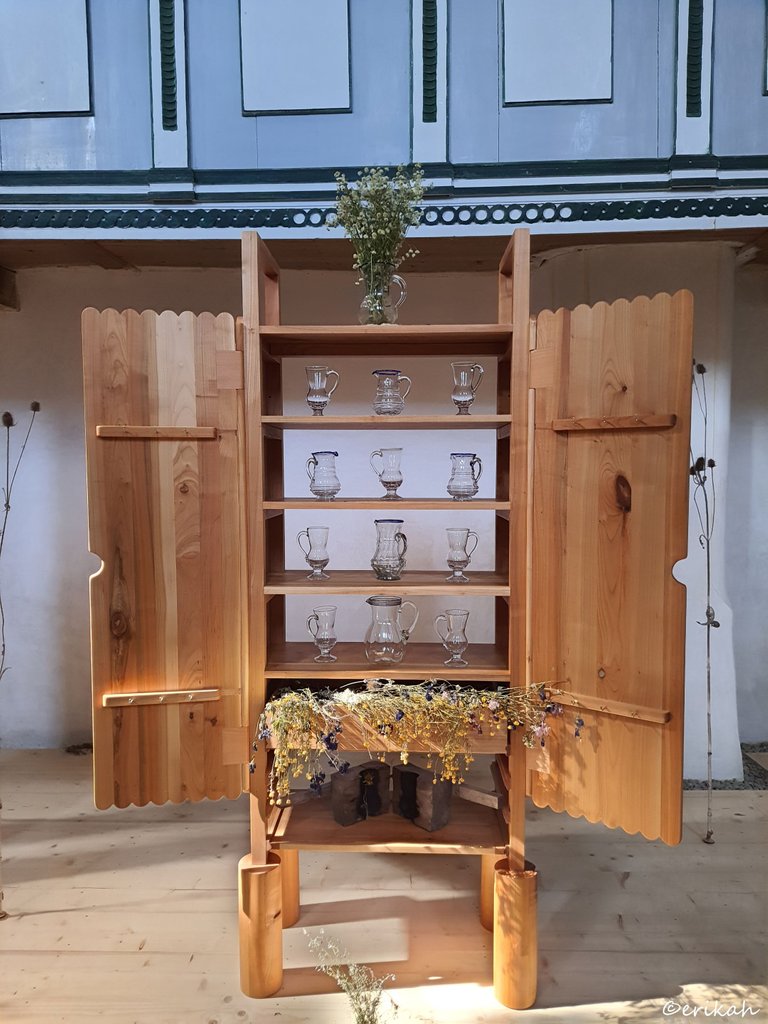
There were these glass jugs displayed and dry flowers as well. I'm not saying it wasn't nice, but being in a church, it was a bit strange.
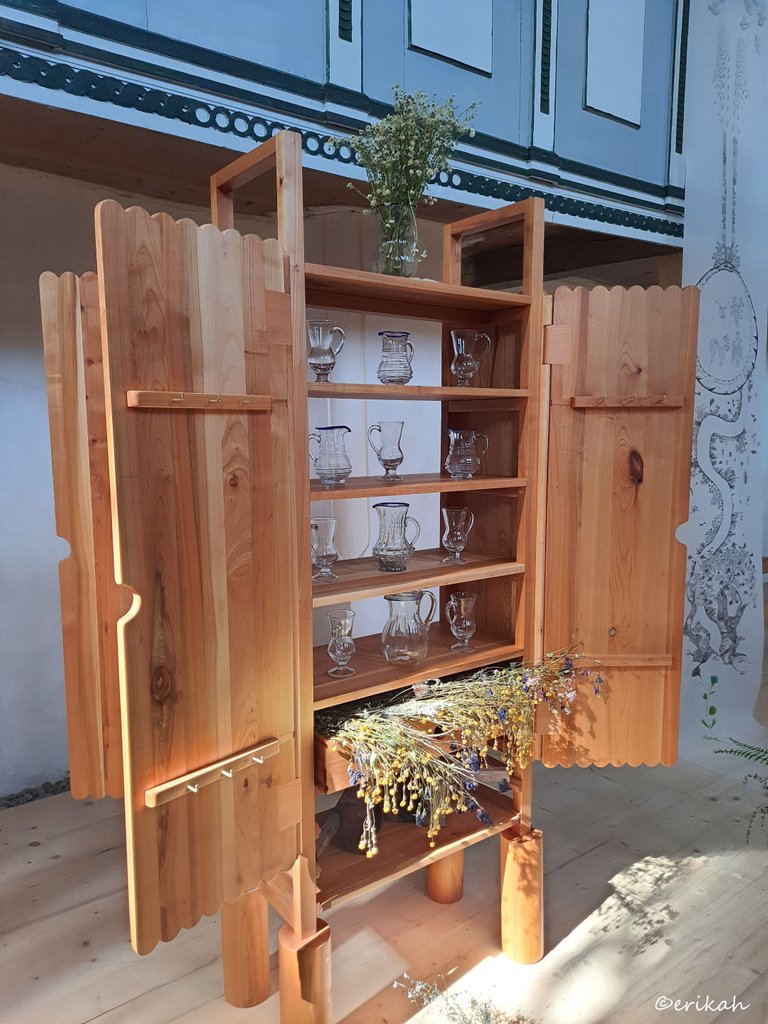
I loved the wooden cabinet and the glass jugs too, would love to have these in my dream house, but in a church? Weird.
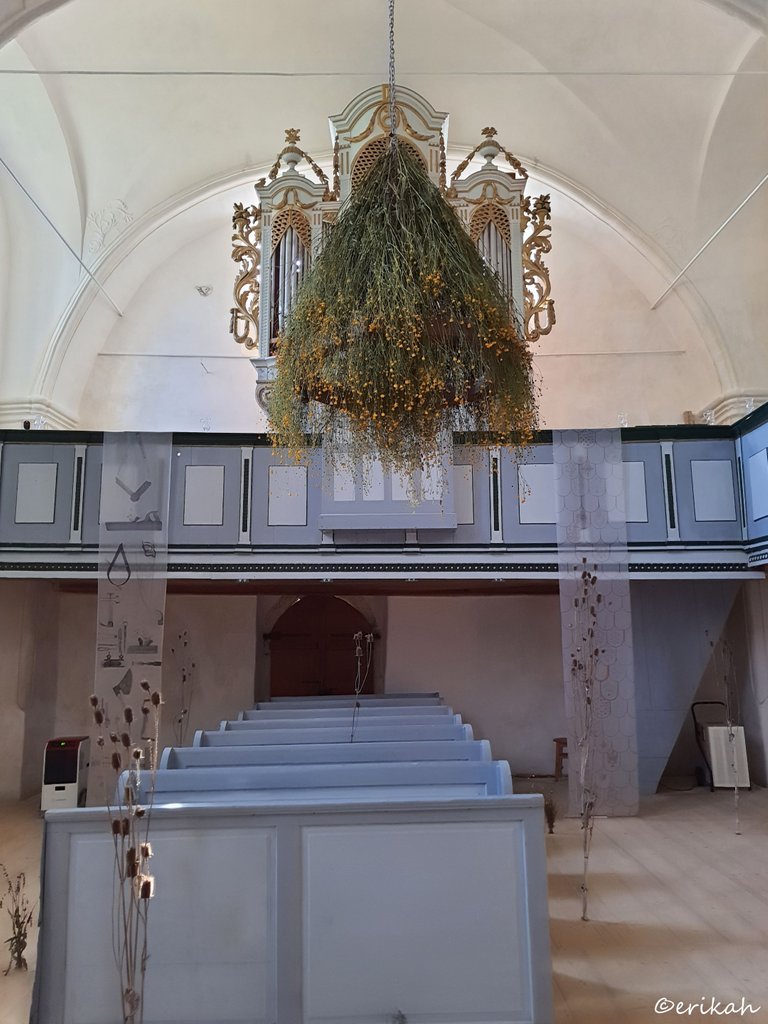
This is what the other half of the church looked like.
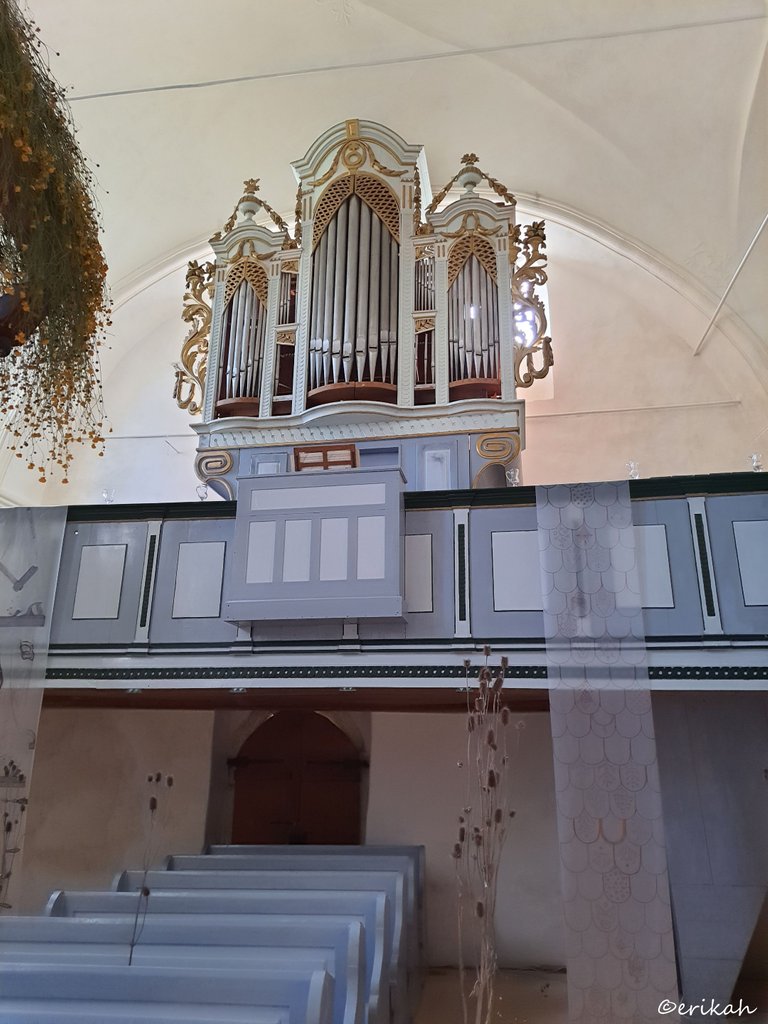
There was a small, but beautiful organ at the top level and the surprise for me was, that no one was playing the organ. A slap on the face basically, as the music was coming from a device we could not see. So in other words, it was fake.
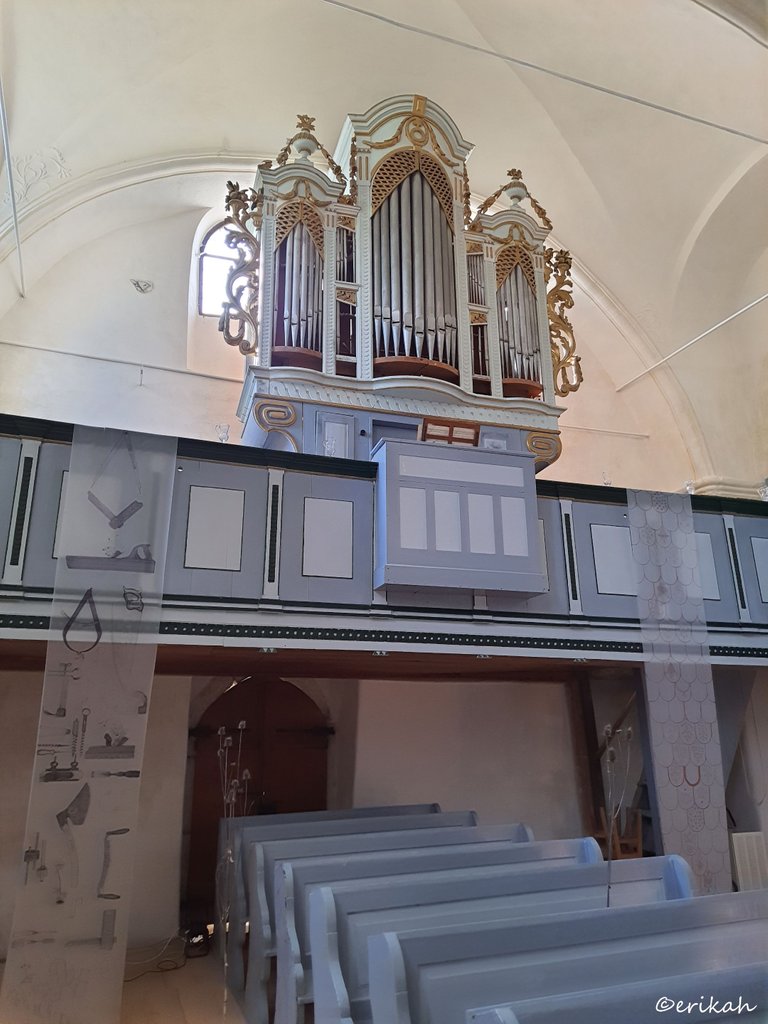
The Saxon church stands on the slope of a hill overlooking the commune and dates from the early 14th century, but the fortification around it was erected almost two centuries later. At the beginning of the 16th century, the small church-hall type church was fortified by raising the choir with two defense floors accessible by a movable staircase, the last one supported on profiled stone consoles that open pitch mouths between them.
The church organ, built in 1840, is located at the west end of the hall, on which occasion a small annex was also built to house its organs.
In 1966, a massive restoration was undertaken, which restored the fortress to its original appearance, removing some modern additions. source
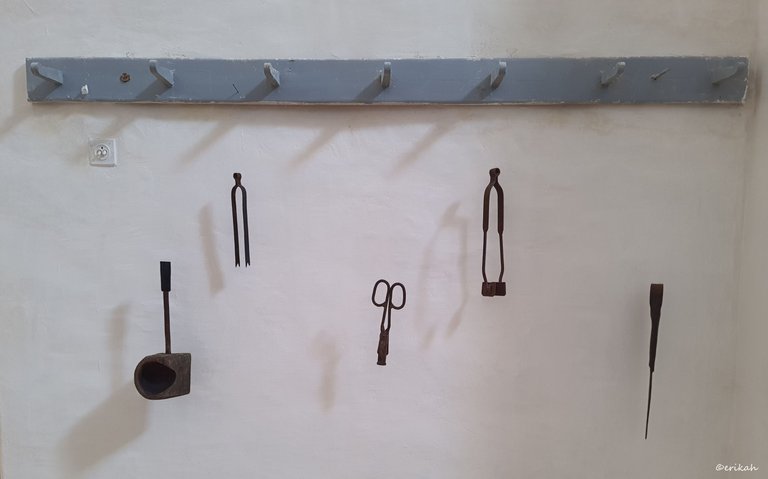
There were these old tools hanging on the hanger, to demonstrate what they were using back in the day.
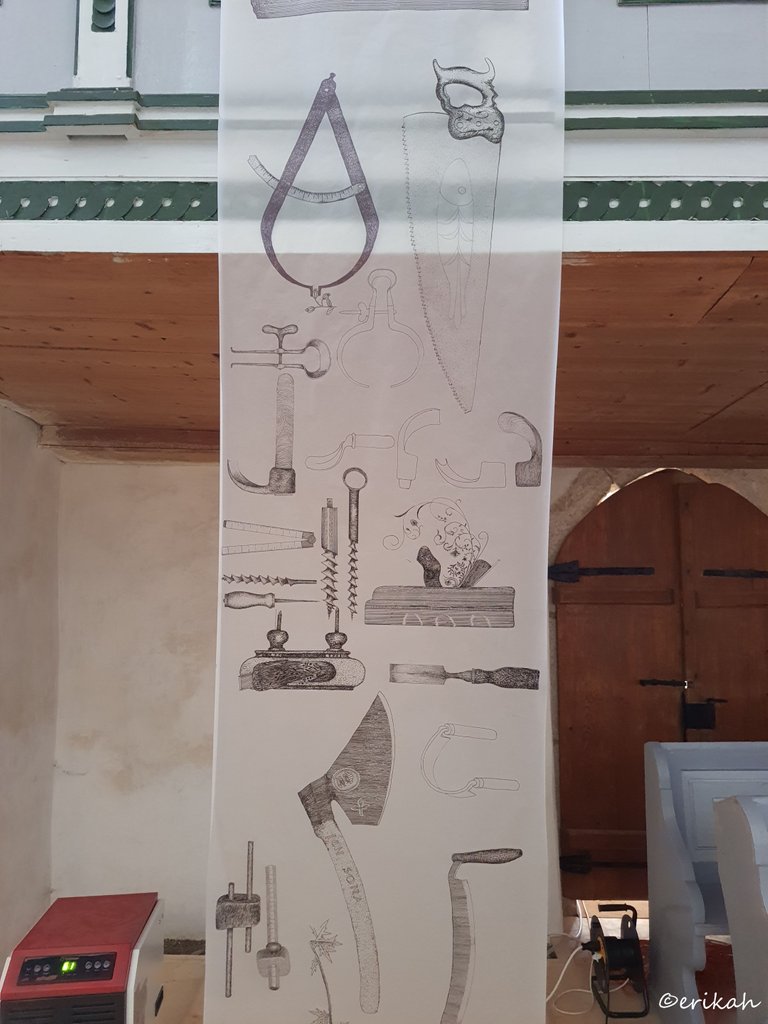
Drawings of old tools on this long paper sheet.
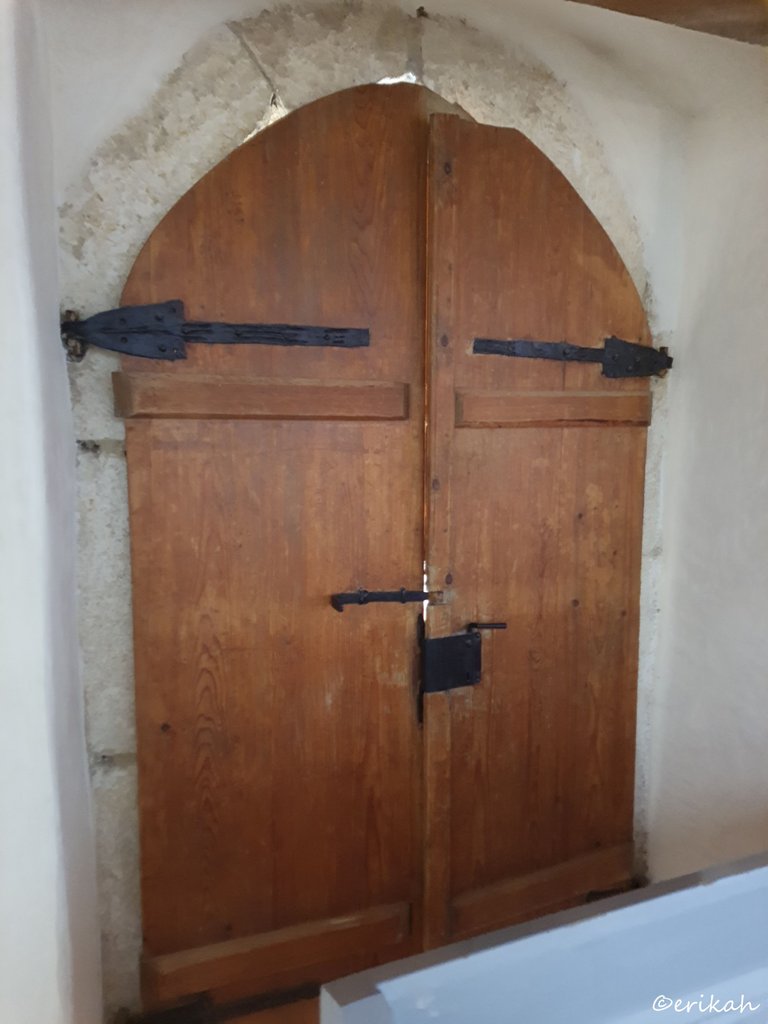
The back door of the church.
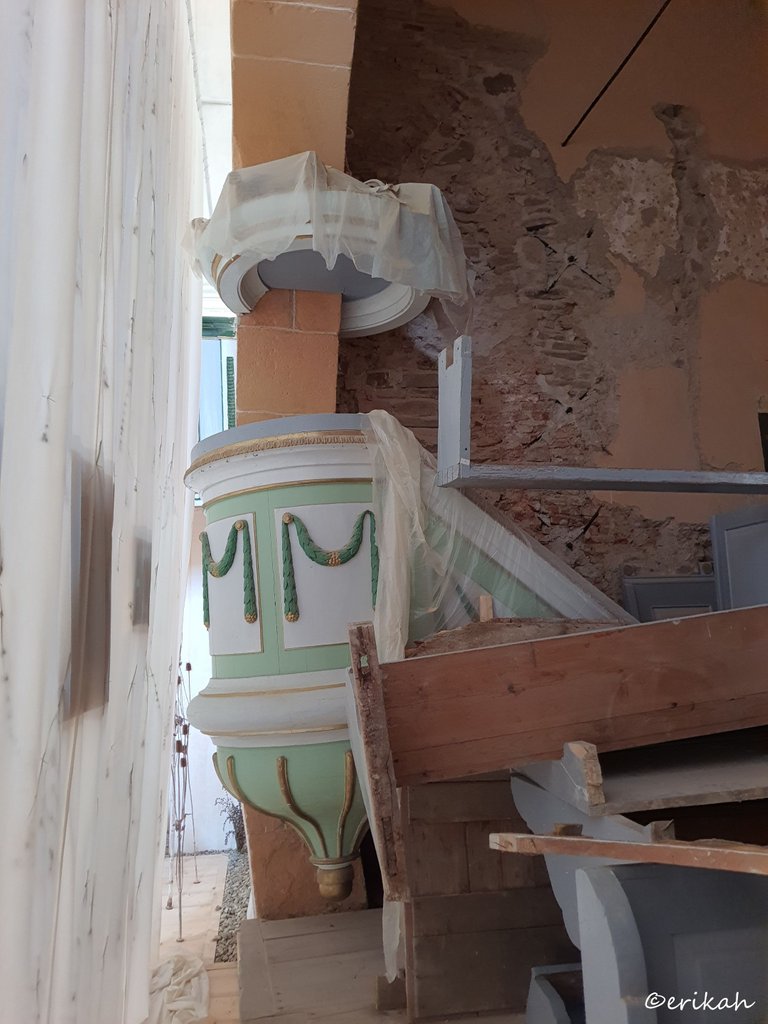
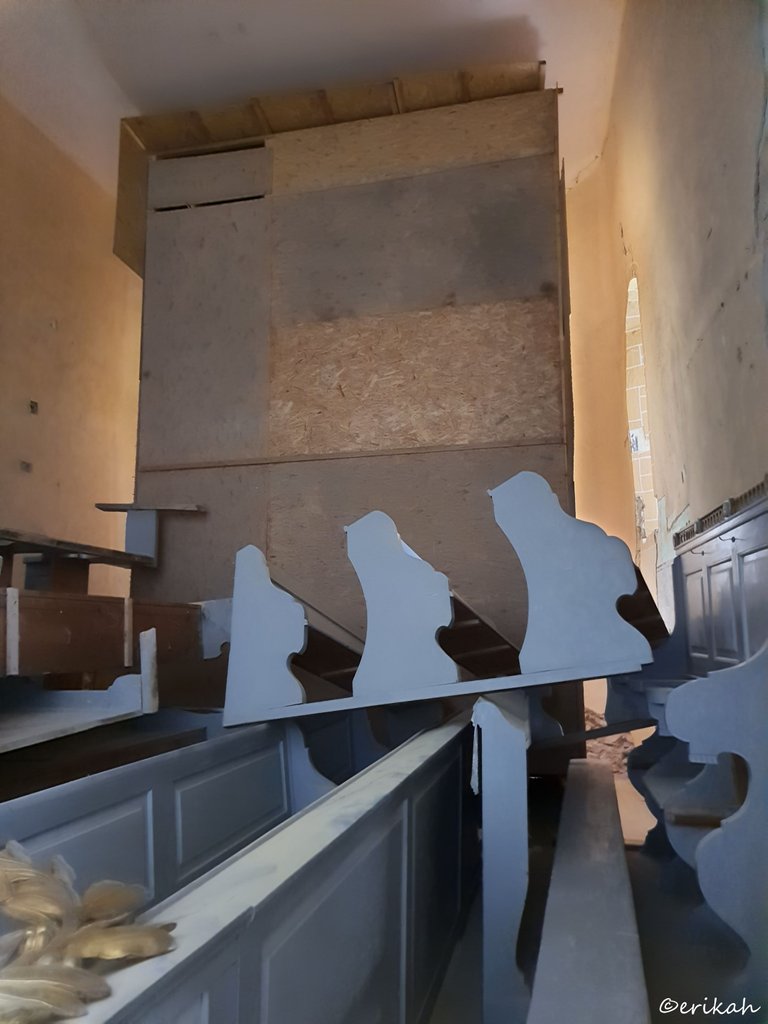
The sad part was this. This is what it was behind the curtain. The pulpit and there should have been the altar too. This means there are no services held there and most likely there are no Saxons either in the village, which is sad. The church lost it's original destination, has become museum now, or exhibition hall. I hope one day the whole church will be restored to its original state and will regain its original purpose.
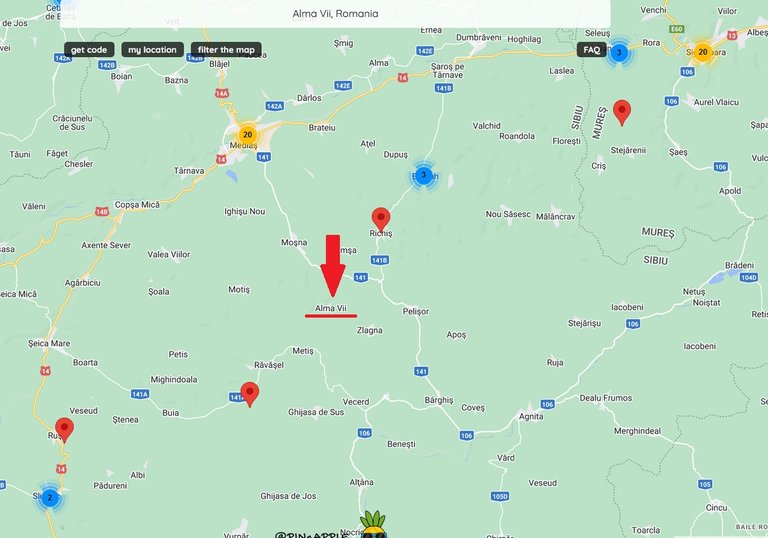
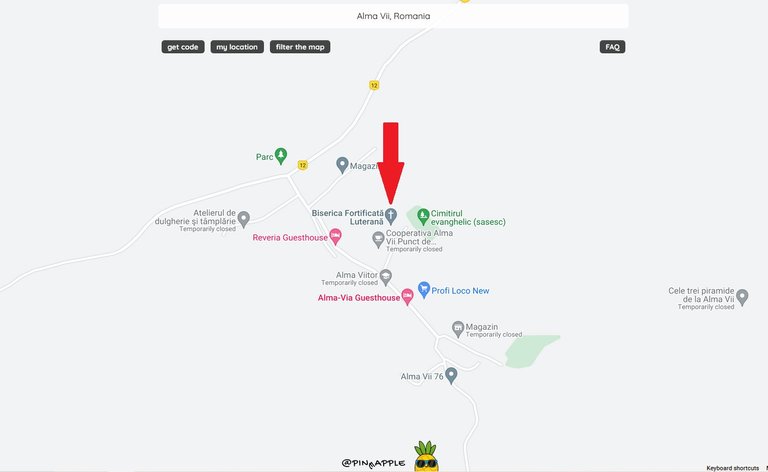
How To Get There
The easiest way to get there is by car. These are the coordinates:
46°2′53.8″N 24°25′51.73″E.
All in all, this is a place that worth visiting for several reasons, so if you're in the area, don't miss it.
This was my post about the church but stay tuned as there's more to come. The fortress is a real and valuable museum, which I'm going to write about in one of my upcoming posts.

If you're a newbie, you may want to check out these guides:
- Communities Explained - Newbie Guide
- Cross Posting And Reposting Explained, Using PeakD
- Hive Is Not For Me
- How To Pump Your Reputation Fast - Newbie Guide
- Tips And Tricks & Useful Hive Tools For Newbies
- More Useful Tools On Hive - Newbie Guide
- Community List And Why It Is Important To Post In The Right Community
- Witnesses And Proposals Explained - Newbie Guide
- To Stake, Or Not To Stake - Newbie Guide
- Tags And Tagging - Newbie Guide
- Newbie Expectations And Reality







